Renault Duster review, test drive
Does Renault's small SUV hit the sweet spot? Read our comprehensive and instrumented review.
Updated on Nov 27, 2013 12:00:44 AM
58,443 Views
Follow us on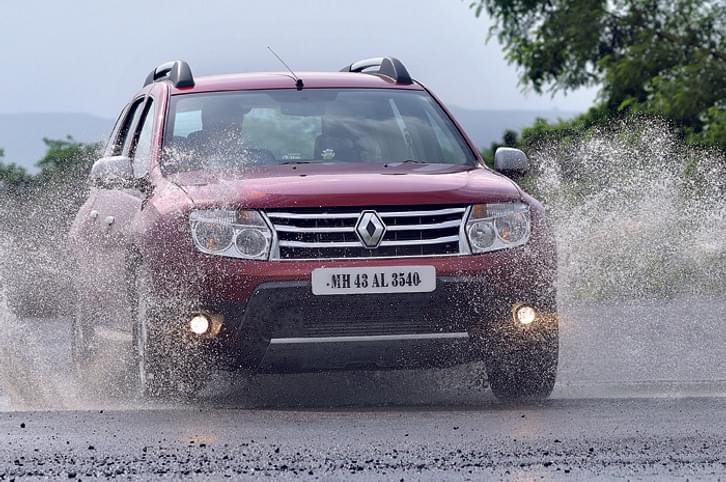
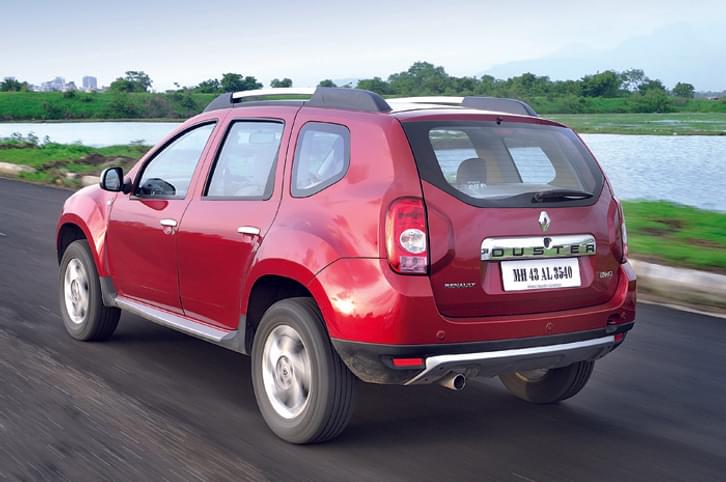
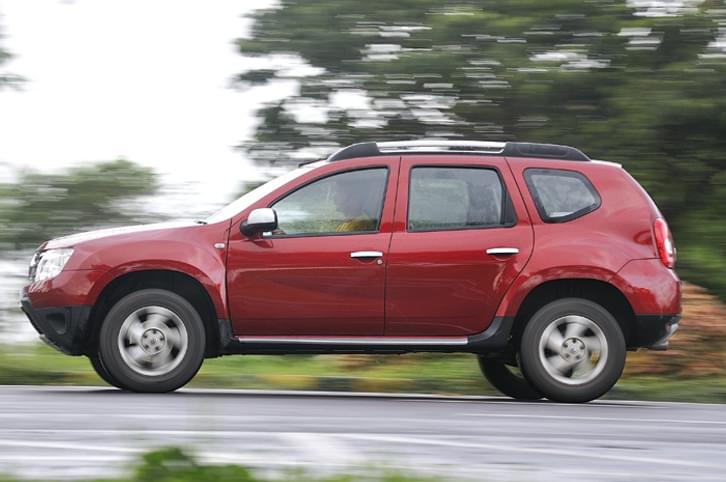
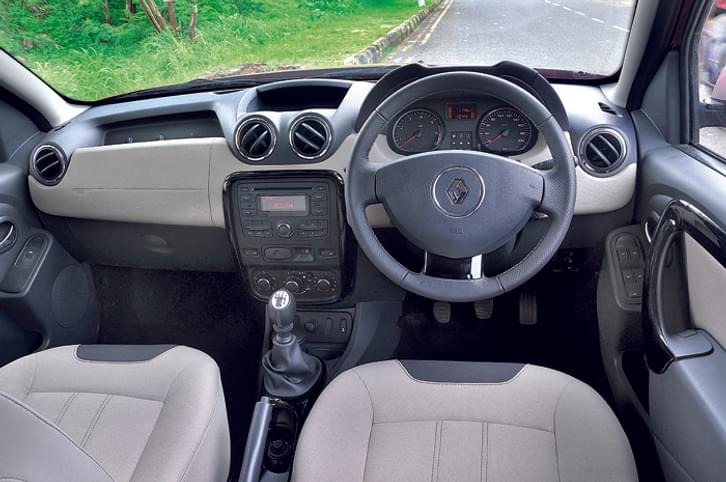
It's no secret that Renault has got the Duster right. The French carmaker has played its cards perfectly with the Duster’s prices, which range from Rs 7.99 lakh to Rs 12.18 lakh. At this price, it appeals not only to large SUV buyers, but also to C-segment saloon buyers.
And with three engine options – 102.5bhp petrol, an 84bhp diesel and a 108.5bhp diesel, there’s a Duster SUV for everyone. Initial complaints about the interiors being a bit too pared down have been addressed partly and this has only added to the Duster's appeal.
We test the more powerful diesel to see if the Duster is all the SUV you’ll need.
| Renault Duster Price, Mileage, Specifications, Features and Variants | |
|---|---|
| Brand | Renault |
| Model Name | Duster |
| Renault Duster Price | NA |
| Renault Duster Range/Mileage | Petrol : 14.19 - 14.99kpl | Diesel : 19.01 - 20.46kpl |
| Renault Duster Specifications | SUV | 5 doors | 5 seats View All Specs |
| Renault Duster Features | Halogen headlight | 7-inch Touchscreen display | 2 airbags View All Features |
| Renault Duster Variants | Petrol RxE | Diesel 85PS RxE | Petrol RxS CVT View All Variants |
A key question is whether or not the Renault Duster matches the Indian car buyer’s image of what an SUV in India should look like. Simply put, yes it does. It stays true to the SUV template with its flared wheel arches, short front and rear overhangs and impressive 205mm ground clearance. All these ingredients add up to give the Duster a very confident stance and make it look larger than it is.
The lack of excessive detailing gives it a robust and no-nonsense look. There is a facelift on the way, but for now, the squarish double-barrel headlights and chrome-rich grille gel well, while the scuff plate and plastic cladding on the lower portion of the bumpers hint at the Duster’s off-road ability. There are more interesting touches in the smart running boards, roof rails and the kink in the rear quarter glass, though some bits like the flimsy lift-type door handles point to the strict costs the Duster is built to.
Like many SUVs today, the Duster positions its full-size spare tyre under the body rather than on the hatch. The rounded tail does make the Duster look a bit hunchbacked, but the blister effect beside the small tail-lamps is unique.
Underpinning the Duster is Renault’s hardy B platform that also forms the basis for the Renault Logan (now Mahindra Verito), though the Duster’s wheelbase is marginally longer. Its monocoque construction also allows it to sit lower than conventional body-on-ladder SUVs. For now, India only gets the front-wheel-drive Duster, which employs MacPherson struts in the front and a programme-deflection torsion beam axle at the rear. All 108.5bhp diesel Duster variants get ABS, EBD and brake assist and ventilated front discs and rear drums as standard.
While the Renault Duster is spacious enough in its own right, it doesn’t feel as roomy as other SUVs in its segment, like the Tata Safari, for instance. However, ingress and egress is a breeze, there’s head- and legroom aplenty for all passengers and the cabin is wide enough to seat three average-sized adults in comfort on the rear seat. Also, the flat rear seat may not look like it is really comfortable, with great back and thigh support. Likewise, the front seats, which get lumbar-support adjustment, are also comfy enough for long distances, though we found the driver’s seat height adjuster cumbersome to use while seated.
But more than anything else, it is the quality of plastics throughout the cabin that disappoint. Some bits, like the well-finished door handles and curvy instrument binnacle, do look nice, but elsewhere the hard plastics seem straight out of a budget hatchback. The pillar-like rear AC vent (engineered especially for India) stands out like a sore thumb, looks cheap, and also eats into middle-passenger legroom. Everything does feel solidly put together though and the fit between panels on the dashboard is decent. There is some more equipment now on top-end Dusters most notably the touch-screen audio with satellite navigation.
The dashboard itself is quite functional, but places the air-con controls a bit low for comfortable access; the mechanically operated air-con switches, both front and rear, also feel quite rudimentary. Then there’s the unusual positioning of the electric mirror adjuster under the handbrake lever, and audio controls on the steering column (and hence out of sight) that take time getting used to. Thankfully, Renault has repositioned the power window switches from the dashboard to dedicated pods on the doors before launching the Duster SUV in India, but it’s still not perfect.
With no third row of seats to eat into boot space as with seven-seat SUVs, the Renault Duster has plenty of space for cargo. The boot is cleverly shaped and can gobble up a lot more luggage than its 475-litre capacity suggests. Folding down the single-piece rear bench further increases the carrying capacity to 1,064 litres.
In keeping with its small SUV tag, the Duster also uses relatively small engines. Apart from a 1.6-litre petrol motor, the Duster comes with Renault’s popular 1.5-litre K9K diesel engine. With an SOHC for its eight valves, this four-cylinder motor may not be cutting-edge in terms of technology, but it is a very flexible unit. On the Duster it is available in two states of tune – 84bhp and 108.5bhp – with different injection systems and turbochargers responsible for the varied power output. The more powerful version tested here, THP in Renault-speak, features seven-hole Piezo injectors, a variable-geometry turbocharger (as opposed to the fixed-geometry turbo on the 84bhp version) and also comes with an intercooler. Prior to the Duster’s launch in India, the THP engine received updates to improve drivability in the form of a simplified air-intake path and new low-inertia turbo.
The Renault Duster 110 feels responsive enough and power builds smoothly from as low as 1500rpm with a stronger shove around the 2000rpm mark. That’s not to say the engine is free from turbo lag. Driving up the twisty hill roads, we had to keep shifting down from third gear to second to maintain momentum. For the record, this motor churns out its 25.3kgm of peak torque at 2250rpm. Thanks to the engine’s broad spread of power, even part-throttle responses are good and you can actually pull cleanly from 30kph in fifth gear. But to get the most out of this engine, you need to stay within the 2000-4000rpm band. Hold gear and the engine will crawl further to its 5000rpm redline, at which point it does sound quite thrashy. In fact, in terms of overall refinement, the engine is just about average. The Duster 85 on the other hand is better for city driving with it's almost-zero lag and lighter, more progressive clutch.
The 110 is mated to Renault’s six-speed TL4 manual gearbox, and while it doesn’t require much effort to change gears, the gearshifts are not very precise. A bigger bother is the slightly heavy clutch in the SUV that gets tiring to operate in stop-go traffic. What does help driveability is the short gearing for first, second and third, which allows you to keep the engine on the boil in typical city driving scenarios. In contrast, fifth and sixth gears are tall, to aid relaxed highway cruising; 80kph in sixth gear has the engine spinning at a lazy 1800rpm.
The manner in which the Renault Duster casually dismisses the worst patches of road makes it a more comfortable drive than all comparably priced saloons too. The suspension always goes about its business in a quiet manner, sharp bumps like expansion joints are easily filtered out and your passengers won’t be able to tell the size of the crater you just drove over.
Even at highway speeds, the Duster SUV remains very composed and free from any undue up-and-down movement. Its wide footprint and relatively low centre of gravity also come together to give it good stability at all speeds and also under braking. A small complaint we have is with the calibration of the ABS system. Hit a bump under hard braking (even in dry conditions) and the ABS kicks in instantly, adding to the stopping distance. Body control is also good and roll is fairly well contained. But, driving up a twisty section, we found the Duster lacked the agility you’d expect from a monocoque SUV. While it is not ponderous around bends, it is not as engaging as a Honda CR-V either. The electro-hydraulic steering doesn’t serve up much feedback either, with some slack at the straight-ahead position. However, it is light enough at low speeds, which is a boon in city confines. A tight turning circle further aids the Duster’s ease of use.
And while it may lack four-wheel-drive hardware, even this front-wheel-drive Duster is quite adept off-road, so long as you are realistic about its abilities. The short gearing and the 30-degree approach and 35-degree departure angles allow the small SUV to clamber up hillocks, and it can also wade through knee-deep water if the need arises.
At 1308kg, the Duster is light by SUV standards, and this more than anything else was bound to reflect in its fuel consumption. Driving in congested city streets, the Duster delivered a fuel economy figure of 11.8kpl. Out on the highway, the tall sixth gear makes the Duster a relaxed cruiser and allows it to stretch each litre of diesel for a remarkable 17 kilometres.
Copyright (c) Autocar India. All rights reserved.

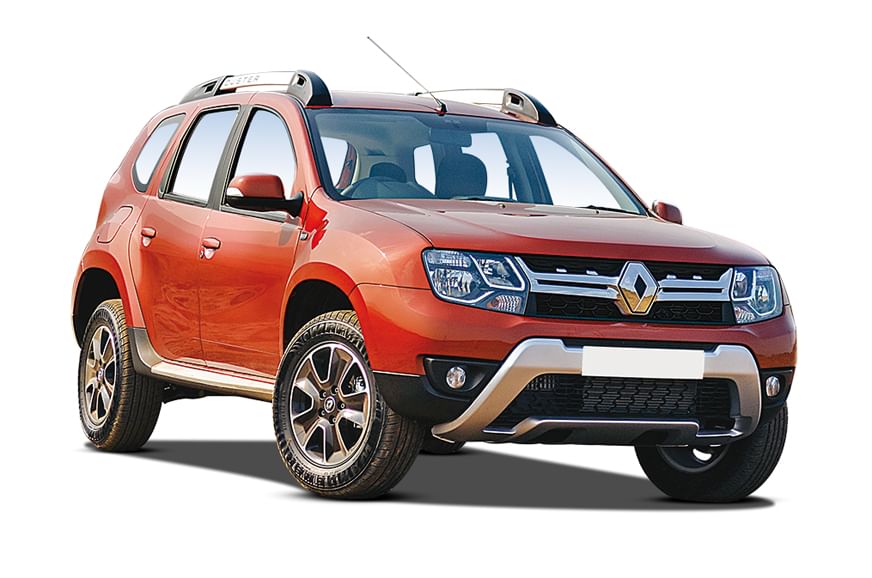





Comments
Member Login
Personal Details
No comments yet. Be the first to comment.